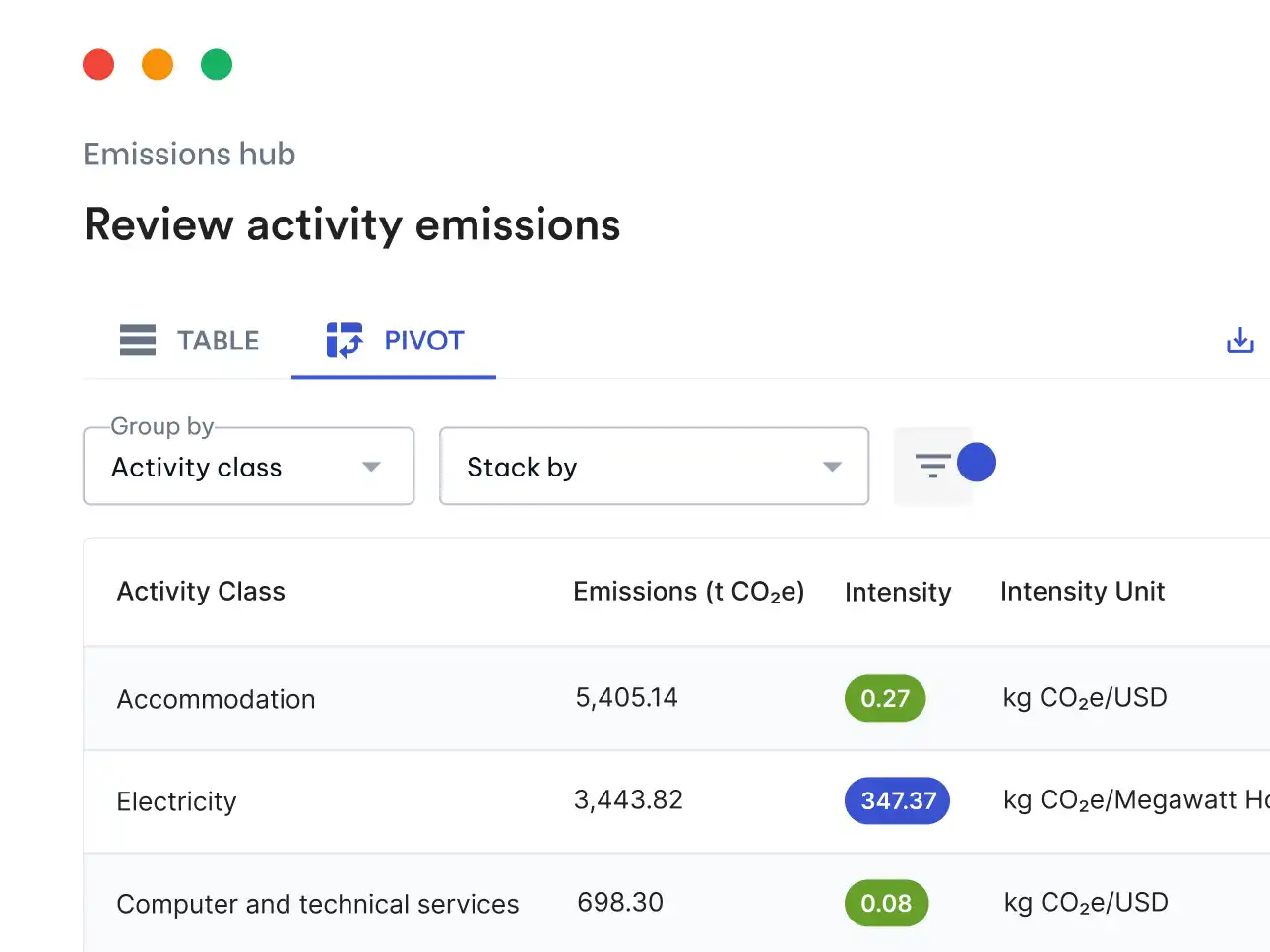Starting January 2025, The new Australian Sustainability Reporting standards (AASB S2) will reshape how businesses report their carbon footprints in Australia, requiring detailed disclosures of climate-related risks and opportunities. For sustainability consultants, ensuring clients comply with this regulation means paying particular attention to scenario analysis and accurate measurement of Scope 1, 2, and 3 emissions. Here’s a step-by-step guide to help you navigate these changes efficiently.
Implementing climate-related scenario analysis
Why it’s Important: Scenario analysis helps organisations test how their strategy and business model will fare under different climate futures. Under AASB S2, companies must assess their climate resilience by evaluating potential risks and opportunities across various time horizons.
Key considerations
- Tailor scenarios to client circumstances: Select climate scenarios relevant to the client's business (e.g., low-carbon transition, physical climate risks).
- Use a mix of qualitative and quantitative approaches: While sophisticated modelling provides more detailed insights, qualitative narratives are acceptable for smaller entities with limited resources.
- Assess financial impacts: The results must address how climate risks impact business operations, financial performance, and cash flows over short, medium, and long terms.
Best practices
- Collaborate with stakeholders: Ensure that management and key departments are engaged throughout the scenario-building process.
- Benchmark against external sources: Leverage industry standards (e.g., IPCC pathways or TCFD scenarios) to align scenarios with global reporting practices.
Measuring Scope 1 and 2 emissions
Overview: Scope 1 covers direct emissions from company-owned operations, while Scope 2 refers to indirect emissions from purchased energy.
AASB S2 requirements
- Granular disclosure: Emissions must be reported separately for the accounting group and other investees (e.g., joint ventures).
- Measurement approach: Companies must use the Greenhouse Gas Protocol as the primary framework. Any changes in methodologies (e.g., switching from control to equity share) must be disclosed.
Best practices
- Utilise location-based Scope 2 data: Choose grid emissions factors based on the regions where electricity is consumed. Include contractual instruments (e.g., Power Purchase Agreements) where relevant to provide clarity.
- Maintain data accuracy: Collect operational data directly from clients’ facilities (e.g., gas, diesel, electricity use). Use reputable emission factor databases (e.g., NGA, EPA, DEFRA) for conversions.
Calculating Scope 3 emissions efficiently
Why Scope 3 matters: Scope 3 covers indirect emissions across the value chain and often represents the largest share of a company’s carbon footprint. AASB S2 requires comprehensive reporting across all relevant Scope 3 categories.
Practical steps
- Use spend-based method for baseline reporting: Start with spend-based calculations to generate an initial inventory (see: How to efficiently calculate Scope 3 emissions with the spend-based method), especially for Purchased Goods and Services (Scope 3, Category 1).
- Refine with supplier-specific data: For more accuracy, collect primary data from top suppliers and calculate supplier-specific emission factors (e.g., kg CO2e per dollar spent) (see: How to create supplier-specific emission factors).
- Categorise effectively: Split activities by materiality, focusing on the top 80% of emissions sources. Match appropriate factors from databases like EXIOBASE or the EPA to the remaining categories.
Avoiding common pitfalls
- Double-counting emissions: Ensure alignment between the client’s boundaries and supplier data to avoid duplication in Scope 3 reporting.
- Annual updates: Monitor significant events (e.g., acquisitions, new contracts) to update emission boundaries and factors accordingly.
Reporting and compliance
Meeting AASB S2 disclosure requirements: Clients must report emissions in their financial statements alongside climate scenario analyses. Each reported emission should align with the company’s accounting group and follow the GHG Protocol’s disclosure structure.
Key reporting actions
- Highlight progress: Provide transparent tracking of emission trends against historical data.
- Ensure cross-industry comparability: Use standardised metrics to demonstrate compliance and show alignment with global frameworks (e.g., IFRS S2).
Consultant's role
- Audit-ready documentation: Prepare reports with complete audit trails of the emission factors used and any adjustments made during the year.
- Integrated reporting: Collaborate with finance teams to ensure that climate disclosures complement the client’s broader financial reporting.
Summary
- Scenario analysis: Tailor scenarios based on the client’s risks and business model, and disclose quantitative or qualitative outcomes based on available resources.
- Scope 1 & 2 reporting: Collect detailed operational data and measure emissions using the GHG Protocol; separate emissions by accounting groups.
- Scope 3 reporting: Start with a spend-based method for baseline estimates and refine with supplier-specific data for material categories.
- Audit-ready reporting: Maintain accurate, auditable documentation to align climate disclosures with financial reports.
To find out more about the full requirements of the AASB S2, refer to the official document from the Australian Government.
Dealing with an influx of inquiries related to the ASRS and need a way to quickly scale your operations to keep up with demand? With Avarni’s carbon accounting platform for consultants, you can:
- Manage all your client ASRS reporting engagements in one central place, branded with your colours and logo
- Automate the assignment of emission factors to business data for Scope 1-3 emissions calculations, cutting time spent on inventory building by 95%
- Review & update automatically assigned emission factors in a specialised workflow, ensuring you are in full control of the final result
- Generate a fully transparent audit trail of the calculation methodology, ready to be shared with your client’s third party auditor
- Provide supplier engagement tools that your client can use to create supplier-specific emission factors and replace estimates
Sign up for a free 14 day trial below or contact us to find out how we can help your sustainability consultancy unlock capacity to scale AASB S2 reporting for clients.






